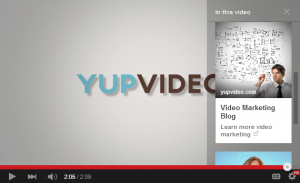Here’s where we get into a battle of semantics. Is it a template? Is it a format? What’s the difference? For these purposes, we’ll equate a “template” to a “format” as an overarching structure – with some minor variations at times – that follows a predictable route. There’s a clearly recognizable beginning, middle, and end.
The Benefits of Formats
Templates/formats offer guidance which many new video marketers find comforting and crucial. You’re able to practice techniques, try different ideas, and achieve competency in a relatively safe bubble.
There are few ambiguities. Think of a coloring book. Nuances vary but the general outlook remains intact because of boundaries. New video marketers can utilize templates to build their reputations while finding their voices.
Formats foster familiarity. Over time, viewers may associate you with your structure when they repeatedly experience high value returns and satisfaction. People return to your videos when they find them trustworthy and proven.
Take a look at these BlendTec videos. Blendtec is a Utah-based maker of high-end commercial and home blenders. The organization is famous for its “Will It Blend?” YouTube series which premiered in October 2006. Nearly 10 years, 870,563 YouTube subscribers, and 271,158,761 views later, Tom Dickson and company are still releasing their signature works.
You’ll notice that production values increase dramatically throughout the years. We see better lighting, picture quality, production design, and editing. Actual video lengths have increased since the series’ inception. However, the general layout remains consistent. The Blendtec team retains the same intro before each video. The theme music doesn’t change. Here, memorable branding elements allow audiences to establish certain expectations. You’re able to subvert, match, or exceed these expectations based on your video’s value proposition.
Why Templates Are Dangerous
The old adage goes, “If it ain’t broke, why fix it?”
Well, viewers get bored or tired of your shtick. Your quality plateaus. Competitors create better stuff.
Templates can promote complacency. Audiences leave when your videos become too predictable and too stale. Here, the expected value return of watching your video may be overshadowed by the value of other content. This downturn presents a significant crossroads for any organization’s video marketing strategy. Do you commit even further to “righting the ship” or do you embark on new adventures?
How to Grapple With The Format Dilemma
Find a balance between posting too frequently and too little with your preferred structure. Remember, greater frequency may dilute the importance of your individual pieces. On the other hand, greater dormancy creates opportunities for competitors to take the lead in your space, putting you at a disadvantage in share-of-mind. You’re busy catching up in a game of “me too” marketing.
What if you’re exceptional at your format? What if you see consistent engagement and sustained performance with a healthy ROI? Like Blendtec, maybe you’ve pioneered a concept or cornered the market on a specific video type. What if your competitors can’t keep up?
Listen to your audiences. Take requests. Acknowledge their criticisms. These invested viewers are those performing the deeper-level behaviors you want: clicking, watching, sharing, subscribing, converting, buying. Understand why they’re there, what makes them stay, and how you can make the experience even better. Just a quick glance at the comments should indicate your next course of action.



